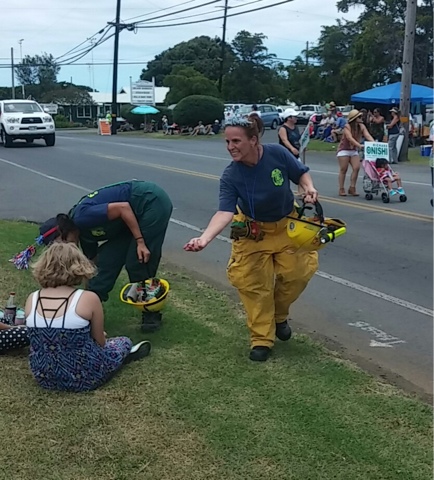Ok, now that I told you how I do a basic rough soil sediment test, what do I do with the results?
First of all, this home test just gives a basic rough idea, it doesn't examine the soil particles under a microscope, so I don't know exactly what my soil looks like. But I don't see the need to be that precise. Nothing is all that precise in my gardening anyway. And besides, I'm not an obsessive-compulsive.
Why forego a more precise laboratory test? Foremost, the plants seem to be growing ok. I'm not seeing significant "sick" soil anymore. And since much of my homesteading approach keeps the idea of frugality in mind, why spend the money if I don't have to.
People often ask me what type of soil I have. Before I learned about soil sediment testing, I had no idea. I was aware that some areas on the farm drained well, some got mucky after a rain, others didn't drain, and yet some soils wouldn't even accept rainwater (hydrophobic soil). I started looking into some beginners soil science and discovered basic soil components......sand, silt, clay, organic material. Im no soil genius. I'm still learning about soil. But I have been introduced to the soil triangle, which I'll try to explain.
The triangle charts, below, help me interpret my test results. Using a soil triangle chart, I was able to figure out what kinds of soil structures I was dealing with and it gave me a foundation to work from for amending my soil where needed. Here what the triangle chart looks like, you can find all sorts of variations on the web........
So how to use this chart?
1- Lets say my soil sediment test showed me that I had 60% sand. So I'll circle the number 60 on the bottom of the triangle. You can see two tan lines going up into the triangle to the left and to the right of the number 60. I will use a marking pen and draw over those two lines, going from the number 60 out to the sides of the triangle,
2-Now, lets say the soil test showed that I had 30% silt. Now I look for the number 30 on the right side of the triangle, the one labelled "percent SILT". There are two tan lines eminating from the number 30, one horizontal and one going down to the left. Using the marking pen, I will highlight those two lines, again out t the triangle sides.
3- The last soil component is clay, and my test says 10%. So I circle the number 10 on the left hand side iof the triangle, the side that says "percent CLAY". Using the the marking pen, I will highlight the tan lines running from the number 10, one going horizontal and one going down to the right.
4- Now I will look to see where all three highlighted lines intersect. In this case of 60% sand, 30% silt, and 10% clay, the lines intersect in the "sandy loam" zone. So that's what my soil would be classified as.
This next soil triangle has a shaded area which notes the more preferred soil types for veggie gardens, while the yellow area is less desirable.
In the actual test I did the other day, my soil sample values were.....
73% sand
16% silt
11% clay
By using the triangle that puts this sample in the "loamy sand" category. But it also shows that the soil composition is outside of the grey "preferred" area. So this garden bed still needs some work. In actual day-to-day use, this bed is productive, but only because I've been working with it. Veggies grow fine but only if I watch the moisture level carefully. The soil drains very readily and dries out quickly. Between crops I will continue to add amendments : compost, manures, biochar, and till in old mulch. Since this garden bed started out as 95% sand, 5% silt, and unmeasurable amount of clay, it's structure is improving. When I started out growing in this soil, the plants were small, starved for moisture and nutrients, and their roots too warm. I had started with beans and they were a pathetic lot. But now beans growing in this soil look good and yield well.
I've been asked a few times.....why bother with the testing. Why not simply dig in a lot of compost. Well, that's one way to try doing it. But my soil structure varies from location to location. Some areas are very gritty and sandy, while others are mucky. Thus I don't think the approach of one-size-fits-all would give the best overall success. By doing this simple test, I can learn what soil components a particular garden bed needs. By amending the soil, I can come up with a bed that retains moisture at an optimum level while still draining, and holds nutrients so that they don't rapidly leech away. Excessive clay is not one of my problems, I learned via these tests.






































